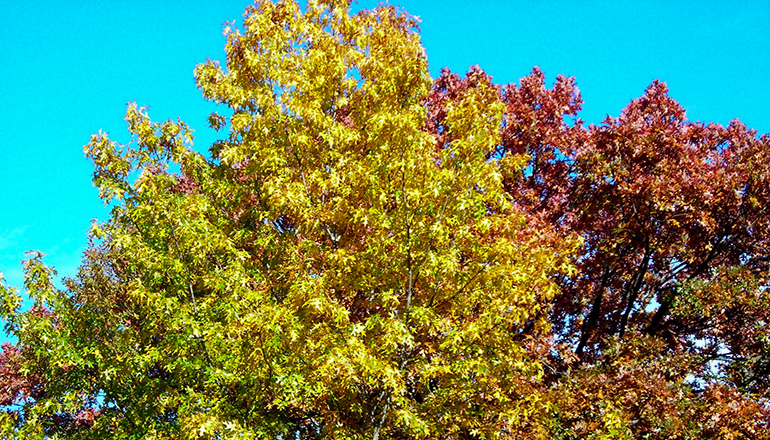Missouri’s hills might not be alive with the sound of music, but they soon will transition into a kaleidoscope of color. The foliage of trees, shrubs, and vines is about to burst into its full glory.
Colors usually peak around the third weekend of October, but Mother Nature is a woman of mystery. “It’s always questionable until the last minute what will happen,” said University of Missouri Extension horticulturist David Trinklein. “Fall color is like Christmas morning. You don’t know if you are going to get an orange or a lump of coal in your stocking.”
Some years are better than others, but about once a decade colors really pop, and 2020 might be one of those years, Trinklein said.
Missouri’s size and diverse landscape make it possible to follow the color from one part of the state to the other. Color changes begin in northern Missouri and move south. Leaves of different deciduous woody plant species turn colors at different times. As a result, fall color in most parts of Missouri lasts from four to six weeks.
Sugar maples are the heavy hitters of fall foliage color. They burst with yellows, golds, and reds along limestone bluffs bordering the Missouri River. Other species, such as hickories, yellow poplar, and persimmon, light up the landscape with their lush yellows and golds. Not to be left out of the show, oaks add rustic reddish-browns for contrast.
Of course, the changing of leaves is not just for show. Leaf shedding is part of the dormancy process that helps trees survive winter, Trinklein said.
During the spring and summer, leaves make food for the trees. Chlorophyll absorbs sunlight to transform carbon dioxide and water into carbohydrates such as sugars and starches through photosynthesis.
The shorter days of late summer trigger the dormancy process. A layer of cells called an “abscission layer” forms at the point where the leaf stem attaches to a branch or twig. Sugars, still manufactured by the leaf but blocked from leaving, turn into colorful pigments known as anthocyanins, which usually are red or purple.
In addition, chlorophyll starts to break down. That is when yellow and gold pigments called carotenoids get to shine. These pigments are present throughout the growing season but are masked by chlorophyll’s dark green color.
Leaf color intensity depends on temperature, light, and the availability of water throughout the year. Color-watchers favor a steady supply of mild, sunny days and cool but not freezing nights for the best chance of fall brilliance. Leaves also need some moisture for colors to intensify.
Contrary to common belief, frost is not necessary for trees to begin their color show, Trinklein said. Early frosts may even tarnish leaf color.
What will this fall bring? The mystery is about to unfold as Mother Nature dances across Missouri with her paintbrush. “Whatever the outcome, fall leaf colors are a treat we are privileged to witness only once each year,” Trinklein said. “Therefore, take time to enjoy them.”
The Missouri Department of Conservation’s fall colors report is at THIS LINK.







